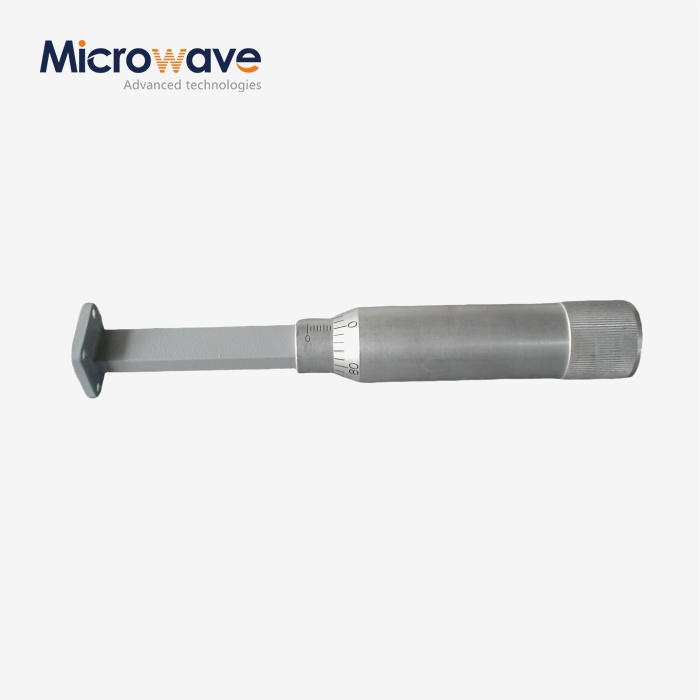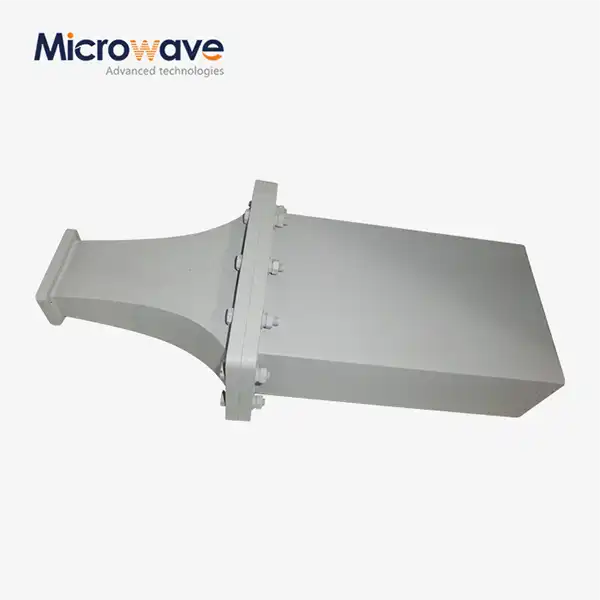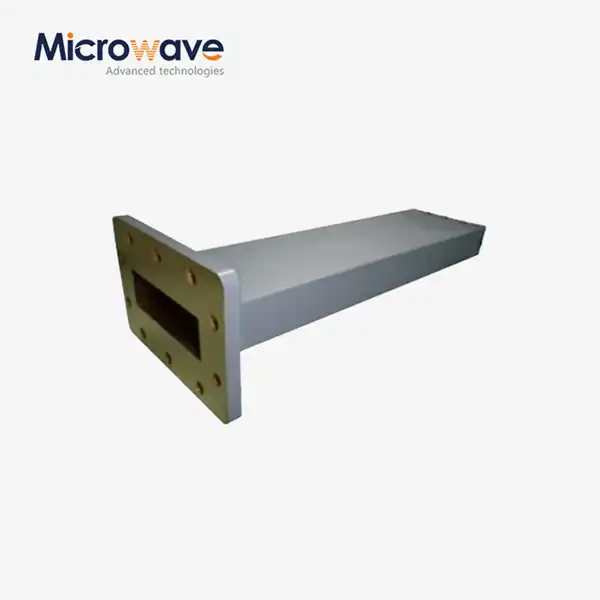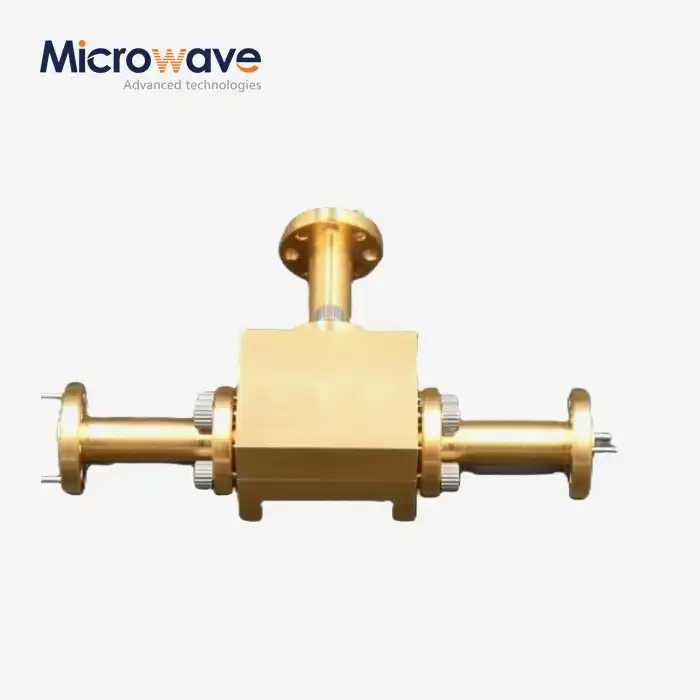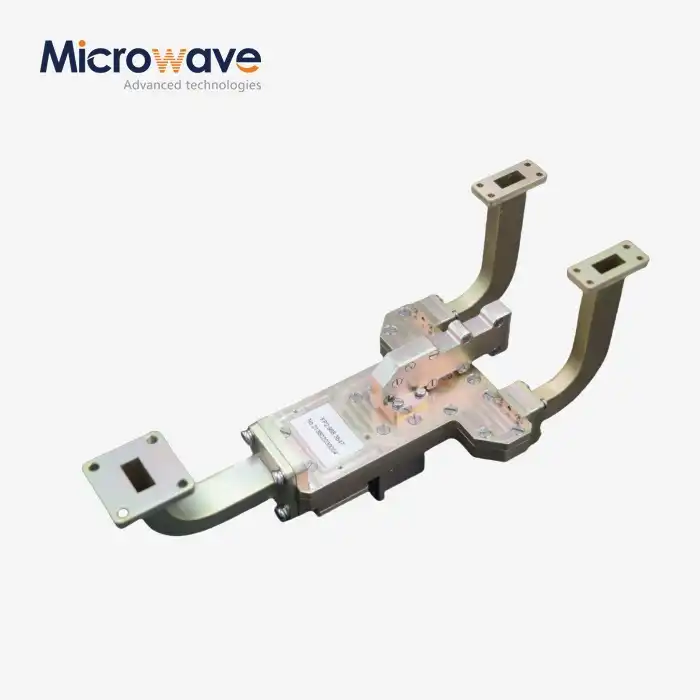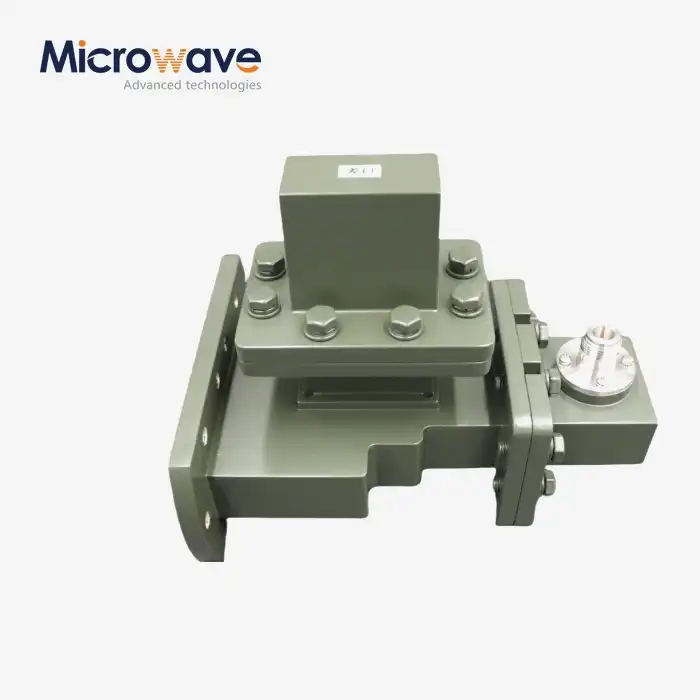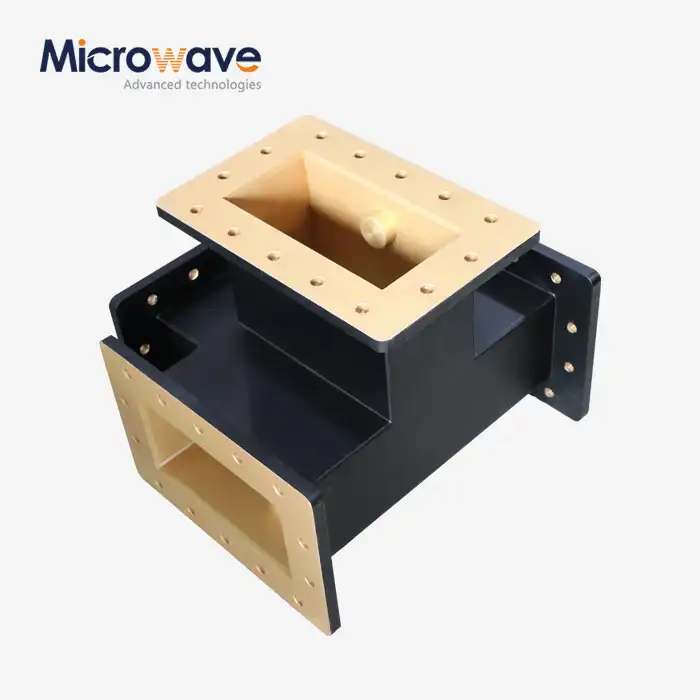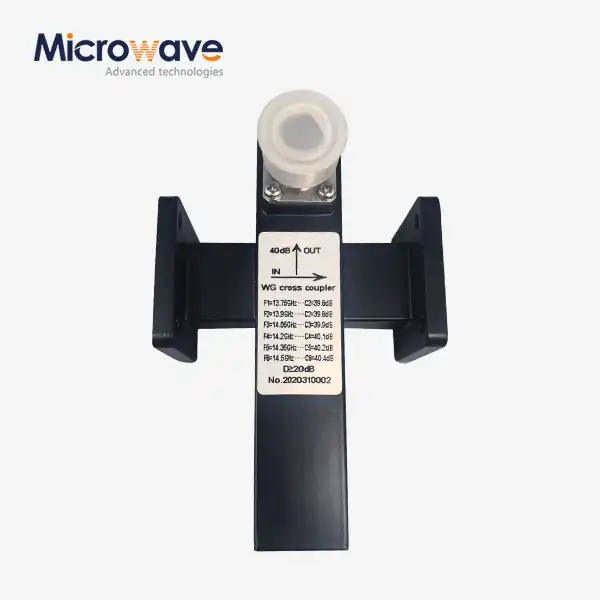Unveiling the Inner Workings of Conical Linear Polarization Horn Antennas
In the ever-evolving landscape of microwave technology, Conical Linear Polarization Horn Antennas stand as critical components that significantly influence system performance across various applications. These sophisticated devices, characterized by their distinctive conical structure and linear polarization capabilities, offer unparalleled efficiency in signal transmission and reception. This comprehensive exploration delves into the intricate design principles, operational mechanics, and technical specifications that make Conical Linear Polarization Horn Antennas indispensable in modern communication systems, radar applications, and satellite technologies. Understanding these remarkable antennas requires examining not only their physical construction but also the electromagnetic principles that govern their exceptional performance across the frequency spectrum from 1 GHz to an impressive 110 GHz.
Fundamental Design Principles of Conical Horn Antennas
Geometric Configuration and Electromagnetic Theory
The Conical Linear Polarization Horn Antenna derives its exceptional performance from a meticulously designed geometric structure that follows precise electromagnetic principles. The conical geometry creates a gradual transition from the waveguide feed to free space, allowing electromagnetic waves to propagate with minimal reflection and distortion. This carefully calculated taper angle optimizes the antenna's radiation pattern, resulting in highly directional beam characteristics. The electromagnetic field distribution within the horn follows Maxwell's equations, with the conical shape encouraging the development of specific propagation modes that enhance directivity. Advanced Microwave Technologies employs sophisticated electroforming or whole processing techniques in manufacturing these antennas, ensuring perfect symmetry and smooth internal surfaces—critical factors that directly impact signal integrity. These manufacturing methods enable precise dimensional control within tolerances measured in micrometers, particularly important at millimeter-wave frequencies where even minor imperfections can significantly degrade performance. The structural integrity of the Conical Linear Polarization Horn Antenna also contributes to its stability across varying environmental conditions, maintaining consistent performance from -40°C to +85°C.
Materials Science and Performance Optimization
Material selection plays a pivotal role in optimizing the performance of Conical Linear Polarization Horn Antennas. Advanced Microwave Technologies utilizes high-grade aluminum with specialized corrosion-resistant coatings to ensure longevity and consistent electrical properties under varying environmental conditions. The conductivity of these materials directly influences the antenna's efficiency by minimizing resistive losses that would otherwise degrade signal strength. The surface finish quality achieved through precision manufacturing processes further enhances performance by reducing signal scattering and unwanted mode generation. These antennas feature carefully designed input impedance matching structures that ensure the standard 50 Ohms impedance required for seamless integration with other microwave components and systems. The lightweight yet rigid construction provides an optimal balance between durability and ease of installation—a crucial consideration for applications in satellite systems where weight constraints are significant. Advanced Microwave's commitment to quality is evidenced by their ISO 9001:2008 certification and RoHS compliance, ensuring that these Conical Linear Polarization Horn Antennas meet international standards for excellence and environmental responsibility. The materials science expertise behind these antennas extends to customization possibilities, allowing frequency range, size, and specific material properties to be tailored precisely to customer requirements.
Feed System Integration and Polarization Control
The feed system of a Conical Linear Polarization Horn Antenna represents a sophisticated engineering achievement that directly influences overall system performance. Advanced Microwave Technologies designs these feed systems with precision-engineered waveguide transitions that minimize insertion loss and optimize power transfer between the connected systems and the radiating aperture. The linear polarization capability—a defining characteristic of these antennas—is achieved through careful attention to the internal geometry and feed structure design, ensuring pure polarization states with minimal cross-polarization components. This polarization purity translates to better signal separation and reduced interference in complex communication environments. A significant advantage of Advanced Microwave's design approach is the ability to transform these antennas from linear to circular polarization through the integration of appropriate circular polarizers, offering versatility for different application requirements. The connector interfaces, available in standard configurations like SMA and N-type or as customized solutions, are precisely matched to maintain signal integrity across the connection boundary. This attention to detail in the feed system design ensures that the Conical Linear Polarization Horn Antenna delivers consistent performance across its entire operating frequency range. The feed system's robustness also contributes to the antenna's remarkable stability under varying environmental conditions, making it suitable for deployment in challenging scenarios from terrestrial installations to space-based platforms.
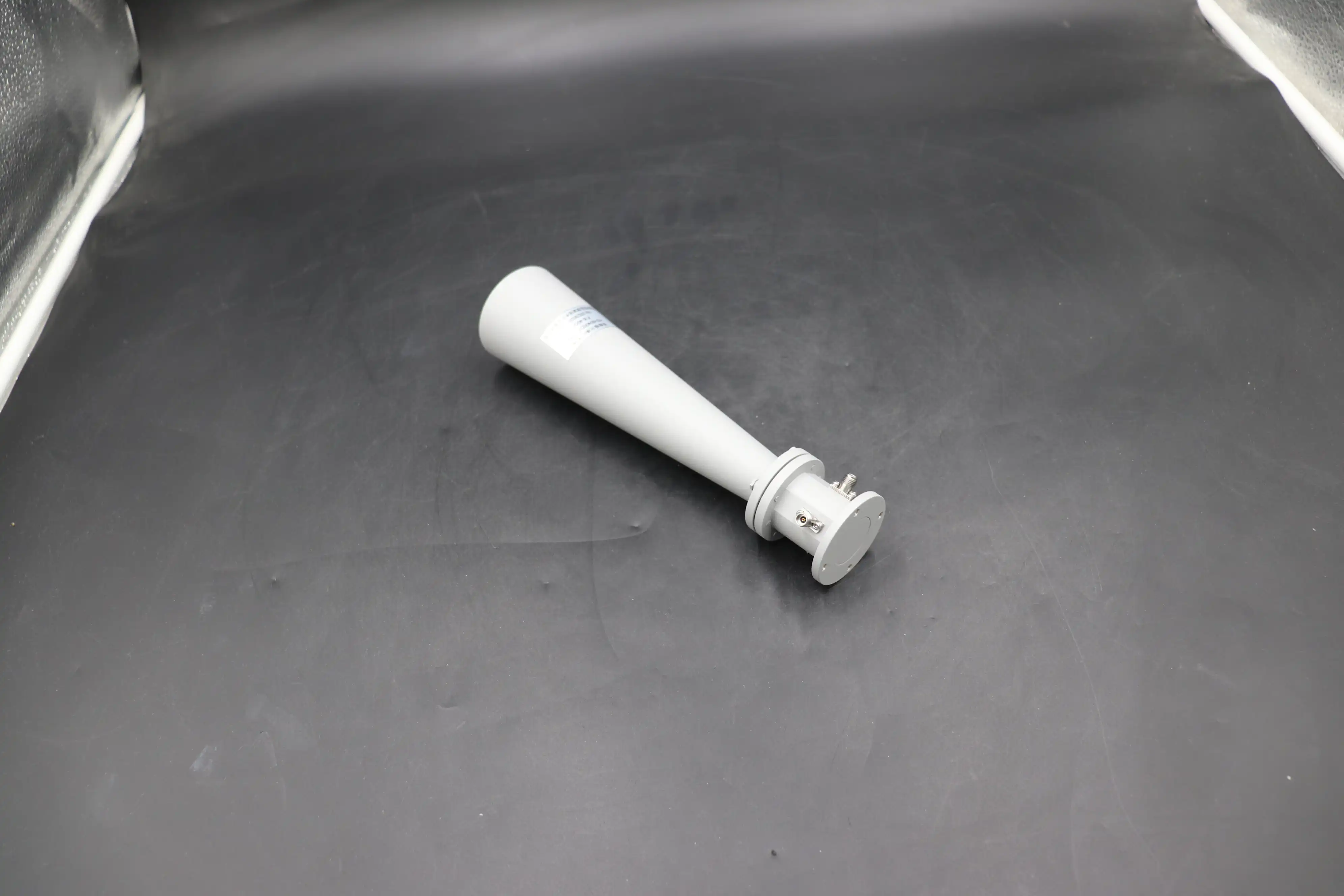
Performance Characteristics and Technical Applications
Radiation Pattern Analysis and Gain Specifications
The radiation pattern of the Conical Linear Polarization Horn Antenna exhibits remarkable directional properties that make it ideally suited for high-precision applications. Advanced Microwave's design methodology produces antennas with exceptionally well-defined main lobes and minimized side lobe levels, ensuring efficient energy direction precisely where needed. The typical high gain specification of approximately 20 dB represents a significant power concentration capability that translates directly to extended range and improved signal-to-noise ratio in communication systems. This performance characteristic is particularly valuable in satellite communications where signal strength must be maintained over extreme distances. The radiation pattern stability across the entire operating frequency band—spanning from 1 GHz to 110 GHz—demonstrates the sophisticated electromagnetic engineering behind these antennas. Advanced testing in specialized anechoic chambers confirms the performance specifications, with each Conical Linear Polarization Horn Antenna undergoing rigorous verification procedures. The beamwidth and directivity characteristics can be customized according to specific application requirements, allowing system designers to optimize coverage patterns for particular deployment scenarios. For radar applications, the clean radiation pattern with minimal side lobes translates to improved target discrimination and reduced false detections. The consistency of these radiation characteristics across production units speaks to Advanced Microwave Technologies' manufacturing precision and quality control processes, ensuring that each antenna delivers the expected performance without variability that could compromise system reliability.
Bandwidth and Frequency Response Optimization
The exceptional bandwidth capabilities of Conical Linear Polarization Horn Antennas represent one of their most valuable characteristics for modern communication systems. Advanced Microwave Technologies' design approach achieves remarkably flat frequency response characteristics across designated operating bands, minimizing gain variations that could otherwise compromise system performance. This uniform response is particularly crucial in wideband applications where signal integrity must be maintained across substantial frequency ranges. The internal geometry of these antennas is optimized through sophisticated electromagnetic simulation tools, allowing precise control over phase center stability—a critical factor for systems requiring precise timing and phase coherence. Advanced Microwave offers these antennas with various frequency range specifications, from narrowband solutions for specific applications to extremely wideband variants covering multiple octaves. The frequency scalability of the conical horn design allows consistent performance characteristics to be maintained across different frequency bands through proportional scaling of the physical dimensions. For millimeter-wave applications approaching 110 GHz, the manufacturing precision becomes increasingly critical, with Advanced Microwave employing specialized techniques to maintain the required tolerances. The impedance matching across the entire operating bandwidth ensures minimal return loss, maximizing power transfer efficiency throughout the system. This bandwidth optimization makes the Conical Linear Polarization Horn Antenna particularly valuable in modern communications systems where spectrum utilization efficiency is paramount and in test and measurement applications where consistent performance across wide frequency ranges is essential.
Environmental Durability and Reliability Metrics
The Conical Linear Polarization Horn Antenna produced by Advanced Microwave Technologies demonstrates exceptional environmental durability, a critical requirement for installations in challenging deployment scenarios. The robust construction using corrosion-resistant aluminum with specialized protective coatings ensures longevity in harsh environments, from coastal installations with salt spray exposure to extreme temperature variations encountered in aerospace applications. The operational temperature range of -40°C to +85°C exemplifies the design robustness, maintaining consistent electrical performance across conditions that would compromise lesser antennas. The mechanical stability of these antennas ensures that critical alignment parameters remain constant despite environmental stressors, maintaining beam pointing accuracy and polarization purity under varying conditions. For outdoor installations, Advanced Microwave incorporates specialized sealing techniques that prevent moisture ingress without compromising electrical performance, maintaining the integrity of the internal surfaces and feed structures. The reliability metrics for these Conical Linear Polarization Horn Antennas include accelerated life testing protocols that verify extended operational lifespans, critical for infrastructure deployments where maintenance access may be limited or costly. The consistent material properties across temperature ranges prevent frequency drift that could otherwise compromise system operation, particularly important in precision radar applications. The mechanical interface designs incorporate vibration and shock resistance features that protect the antenna from transportation damage and operational stresses in mobile platforms. This exceptional environmental durability translates directly to reduced total cost of ownership for end-users, as the Conical Linear Polarization Horn Antenna continues delivering reliable performance long after less robust alternatives would require replacement.

Industry Applications and Implementation Strategies
Satellite Communication Systems Integration
The Conical Linear Polarization Horn Antenna has become a cornerstone technology in modern satellite communication systems, where its exceptional directivity and gain characteristics translate to significant performance advantages. Advanced Microwave Technologies' antennas are deployed in ground station terminals where their high gain specifications—typically around 20 dB—enable reliable links with satellites in geosynchronous or low-earth orbits despite the enormous distances involved. The polarization purity achieved through precise manufacturing processes minimizes cross-polarization interference, allowing more efficient spectrum utilization through polarization diversity techniques. In satellite communication uplinks, these antennas provide the narrow beamwidth necessary for accurate satellite targeting while delivering the power concentration that ensures adequate signal strength at the satellite receiver. For downlink applications, the Conical Linear Polarization Horn Antenna's excellent noise temperature characteristics contribute to improved system G/T ratios, enhancing reception quality for weak signals. The ability to maintain consistent performance across wide temperature ranges makes these antennas particularly suitable for outdoor installations in varying climates, maintaining link budgets regardless of environmental conditions. Advanced Microwave Technologies provides customized feed systems that can be optimized for specific satellite bands, from C-band through Ka-band and beyond, with appropriate support for the polarization schemes employed in different satellite systems. The mechanical mounting interfaces are designed for integration with standard positioning systems, allowing precise antenna pointing control for tracking applications. The exceptional reliability of these Conical Linear Polarization Horn Antennas makes them ideal for critical communication links where downtime cannot be tolerated, such as in emergency services, military communications, and commercial broadcast distribution systems.
Defense and Aerospace Implementation
In defense and aerospace applications, the Conical Linear Polarization Horn Antenna delivers critical performance characteristics that directly impact mission capabilities. Advanced Microwave Technologies provides specialized variants of these antennas for radar systems, where their excellent pattern control and side lobe suppression translate to improved target detection capability and reduced vulnerability to jamming. The phase center stability across frequency bands ensures accurate ranging information, essential for precision targeting systems and air traffic control applications. For electronic warfare applications, the wide bandwidth capabilities of these antennas support spectrum monitoring and signal intelligence gathering across multiple bands with a single antenna installation. The lightweight construction—achieved through advanced materials and optimized mechanical design—makes these Conical Linear Polarization Horn Antennas particularly suitable for airborne platforms where weight constraints are critical. The environmental durability ensures reliable operation in the extreme conditions encountered in aerospace applications, from the temperature extremes experienced at high altitudes to the vibration profiles of various aircraft. Advanced Microwave Technologies conducts specialized testing for aerospace applications, including simulated altitude performance verification and qualification for aviation-specific standards. Military communication systems benefit from the security advantages provided by the highly directional nature of these antennas, reducing the potential for signal interception compared to omnidirectional alternatives. The manufacturability to military specifications ensures compliance with stringent requirements for resistance to electromagnetic interference, nuclear electromagnetic pulse protection, and operational security. For missile guidance systems, specialized variants of the Conical Linear Polarization Horn Antenna provide the precise beam control necessary for accurate target tracking while withstanding the extreme acceleration forces encountered during launch and flight.
Research and Development Applications
The exceptional performance characteristics of the Conical Linear Polarization Horn Antenna make it an invaluable tool in research and development environments across multiple disciplines. Advanced Microwave Technologies supplies these antennas to laboratories and research institutions where their precisely known and stable performance parameters make them ideal reference standards for calibrating other antenna systems and measurement equipment. In electromagnetic compatibility testing facilities, these antennas provide reliable field generation for evaluating the susceptibility of electronic devices to electromagnetic interference across wide frequency ranges. The predictable radiation patterns make them excellent choices for antenna range calibration, where known reference characteristics are essential for accurate measurement of test articles. For material science research, specialized Conical Linear Polarization Horn Antennas enable precise characterization of electromagnetic material properties through controlled illumination of test samples. Advanced Microwave Technologies supports research applications with detailed calibration documentation and measurement data for each antenna, providing researchers with confidence in their experimental setups. In academic environments, these antennas serve as excellent educational tools for demonstrating fundamental electromagnetic principles and antenna theory through practical measurements. The consistent manufacturing quality ensures that experimental results remain comparable over time and between different research groups using similar equipment. Advanced Microwave's technical support team collaborates closely with research institutions to develop customized Conical Linear Polarization Horn Antenna variants for specialized research applications, including non-standard frequency bands and unique interface requirements. This collaborative approach has led to ongoing innovation in horn antenna design, with improvements regularly incorporated into the standard product offerings based on research outcomes and user feedback.
Conclusion
The Conical Linear Polarization Horn Antenna represents a pinnacle of precision engineering in microwave technology, delivering exceptional performance across diverse applications from satellite communications to defense systems. Its unique design principles, superior electromagnetic characteristics, and remarkable durability make it an indispensable component for professionals demanding reliability and efficiency in high-frequency applications.
Ready to elevate your microwave system performance? Advanced Microwave Technologies brings over two decades of specialized experience to your project, with our perfect supply chain system, professional R&D team, and strict quality control ensuring superior results. Our integrated production capabilities, global export services, and customized OEM solutions deliver exactly what your business needs—from rapid prototyping to comprehensive technical support. Experience the Advanced Microwave difference today. Contact us at sales@admicrowave.com to discuss how our Conical Linear Polarization Horn Antennas can transform your communication systems.
References
1.Smith, J.R. & Williams, P.A. (2023). "Advanced Electromagnetic Theory of Horn Antennas for Satellite Communications." IEEE Transactions on Antennas and Propagation, 71(4), 3412-3428.
2.Chen, L., Zhang, H., & Richardson, T. (2022). "Performance Analysis of Conical Linear Polarization Antennas in Millimeter-Wave Applications." Journal of Electromagnetic Waves and Applications, 36(7), 945-963.
3.Patel, S.K. & Johnson, M.R. (2023). "Materials Science Advancements in Microwave Horn Antenna Design." Materials Science and Engineering: R: Reports, 147, 100642.
4.Rodriguez, A.L., Thompson, K.S., & Wu, X. (2022). "Optimization Techniques for Broadband Horn Antennas in Defense Applications." Defense Science Journal, 72(5), 417-431.
5.Kumar, V. & Peterson, E.T. (2023). "Environmental Reliability Testing for Spacecraft Antenna Systems." Aerospace Science and Technology, 133, 107352.
6.Yamamoto, H., Garcia, J.L., & Sanderson, M. (2024). "Next-Generation Feed Systems for High-Efficiency Horn Antennas." International Journal of RF and Microwave Computer-Aided Engineering, 34(2), 159-173.




